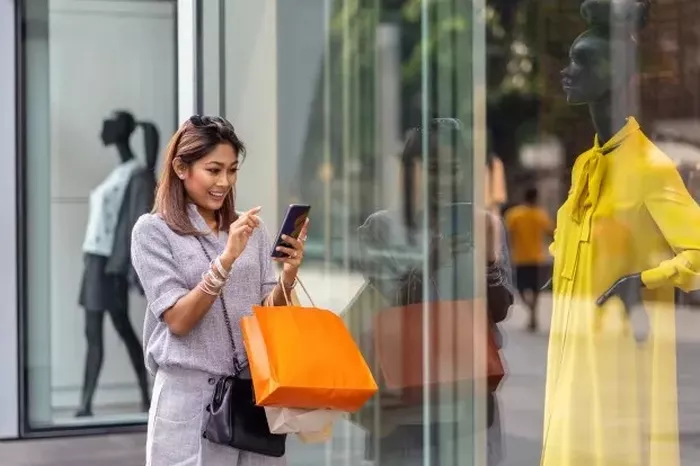Consumers are increasingly responsive to text messages from brands, with beauty shoppers showing a particularly strong preference. According to Listrak’s 2025 Beauty & Fashion Benchmark Report, beauty shoppers are twice as likely to convert after receiving an SMS “cart abandonment message” and 2.6 times more likely to convert after receiving a price drop alert via SMS. To help beauty and fashion brands better understand current consumer behavior regarding SMS, loyalty programs, and how to address e-commerce window shopping, Listrak— a retail marketing platform supporting brands like Peter Thomas Roth, Coola, Oscar de la Renta, and 7 For All Mankind—combined AI-driven insights with expert industry analysis. The report is based on data from over 125 billion emails and SMS/MMS messages sent by more than 1,000 e-commerce clients between January 1, 2024, and December 31, 2024. Jamie Elden, Listrak’s Chief Revenue Officer and head of the beauty and fashion division, remarked, “Listrak is more than just a platform—it’s a partner. Through our expertise and predictive intelligence, we help fashion and beauty brands anticipate trends, optimize strategies, and make smarter marketing decisions that deliver real-time results.”
One key takeaway from the benchmark report is the growing favorability of SMS communication. The data reveals that fashion shoppers are becoming more comfortable purchasing directly from their phones, as evidenced by year-over-year increases in conversion rates across all SMS campaigns. Clickthrough rates for SMS campaigns in the fashion sector ranged from 8.2% to 10.7% for browse abandonment, 7.9% to 13.7% for cart abandonment, 9.9% to 13% for back-in-stock alerts, 9.4% to 12.1% for low inventory alerts, and 13.1% to 18.5% for price drop alerts. Post-purchase messages had clickthrough rates ranging from 3.6% to 6.2%. For beauty brands, SMS clickthrough rates were generally lower, with browse abandonment rates ranging from 4.8% to 7.1%, cart abandonment from 6.8% to 9.2%, back-in-stock alerts at 9.3%, low inventory alerts at 4.9%, price drop alerts between 10.5% and 11.9%, and post-purchase messages from 1.4% to 3.6%. The data highlights that SMS is proving to be a powerful tool for both industries, especially for encouraging conversion.
The report also sheds light on the increasing effectiveness of loyalty programs. Beauty brands, in particular, revamped their loyalty strategies, resulting in a significant 60-fold increase in loyalty sends. These campaigns experienced twice the average clickthrough rates, driving higher engagement. In the fashion sector, loyalty sends rose by 167% year-over-year, with more brands launching or revamping their loyalty programs. This signals that both sectors are increasingly recognizing the importance of maintaining customer loyalty through personalized and consistent messaging.
An emerging trend in 2024 was a marked increase in “window shopping” behavior. Messages related to browsing abandonment rose by 51%, while cart abandonment increased by 42%. According to the report’s authors, “Many beauty shoppers did not convert immediately, either abandoning their carts or researching products online before purchasing in-store.” In response, fashion brands heavily relied on urgency-driven messaging, such as low inventory, price drop, and replenishment alerts, to combat window shopping and push for conversions. This strategy helped brands stay engaged with potential customers, encouraging them to return and complete their purchases.
Despite rising acquisition costs, the report notes that fashion brands concentrated their efforts on reactivating dormant shoppers in 2024, nearly doubling this rate from the previous year. Urgency-driven messaging, including alerts about low inventory, price drops, and product replenishment, saw a significant uptick and contributed to higher conversion rates and increased site traffic. This shift toward re-engaging existing customers is becoming an essential strategy for fashion brands aiming to maximize their marketing budgets.
The authors of Listrak’s report advise brands to leverage these insights to refine their campaigns, including incorporating AI-powered strategies. These strategies include AI-driven product recommendations in broadcast emails, using channel affinity to determine engagement levels, and creating automated campaigns that target specific products for repeat purchases. Marketers are encouraged to use the data from this report as a guide to fine-tune their marketing efforts and enhance their overall engagement strategies. By doing so, they can optimize customer experiences and drive higher conversion rates across their campaigns.
Related Topics
- Matalan’s Ben Smith to Lead Sainsbury’s Tu Clothing Brand
- R&B Fast Fashion Brand Expands with Ambitious Plan to Open 250 Stores by 2025
- Mi’kma’ki Strong Clothing Brand Expands to Promote Unity and National Pride Across Canada

